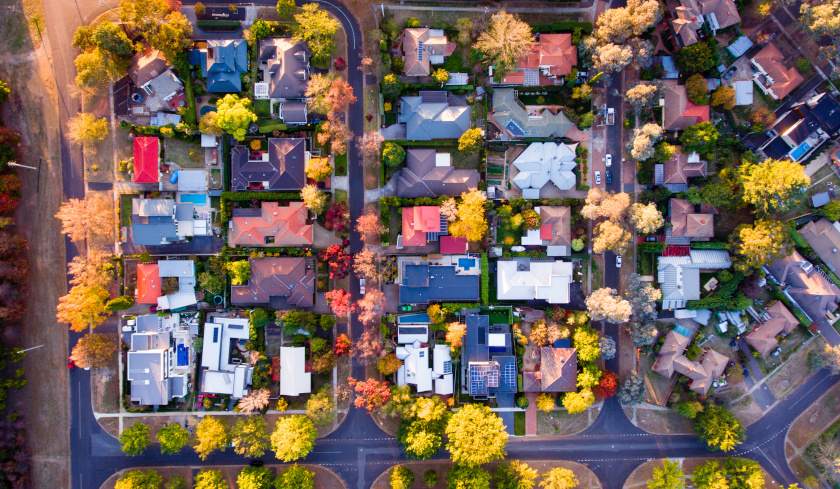Invest
What is a Bare Trust?
A bare trust is necessary in order for two or more parties to separate ownership of assets, but what exactly is it and how does it work?
What is a Bare Trust?
A bare trust is necessary in order for two or more parties to separate ownership of assets, but what exactly is it and how does it work?

Many are probably familiar with the term ‘trust’ because of superannuation, however, not everyone fully understands the concept and how exactly bare trusts work.
Contrary to popular belief, trusts are not actual entities that are a part of trust agreements. Rather, it is the act of establishing a relationship between a trustee and beneficiary in a legal separation of asset ownership.
Bare trusts are the simplest and most common form of trust. This means all bare trusts are trusts, but a trust may take on other forms depending on the circumstances of ownership.
How can people legally separate the ownership of assets?
- In a simple bare trust, two or more parties establish a relationship where they share ‘ownership’ of an asset, but only one is the true owner. One party—the legal owner or trustee—functions as the asset owner on paper. This means it would look as if they own the asset because legal documents have their name on it.
- The other party, called a beneficial owner, is the true owner of the asset. They are the ones who benefit from any gains or endure losses. Beneficial owners are also responsible for all financial obligations related to the asset, such as payment for the purchase and taxes.
- Establishing a bare trust is an acknowledgement from the trustee or legal owner that they have no actual rights over an asset, and that they only act on behalf of the beneficial owner.
- The beneficial owner, on the other hand, acknowledges that they are legally bound to take responsibility over the asset.
What’s the point of separating assets ownership?
People usually separate legal and beneficial ownership of assets when the beneficiary cannot control or manage the asset, such as when the beneficial owner is below 18 years old. Others to it so secure the asset from those with a vested interest in it.

A trustee or legal owner may only hold and/or manage assets for the beneficial owner and may not express an interest in or benefit from them.
One example of this is when a parent opens a bank account for their child. The legal owner or bare trustee is the parent, but the only person who will benefit from the account is their child.
This also applies when one person asks another to purchase a property on their behalf.
A bare trust would allow the trustee to purchase the property according to the beneficiary’s instructions, but at the same time, does not place any legal burden other than signing documents related to the purchase.
A bare trust may be used to hold on to assets for someone else or for the beneficiary to hide their identity when purchasing a property or asset. These are both legal as long as a valid trust document is signed.
What are the important characteristics of bare trusts?
A bare trust must explicitly exhibit several characteristics in order to be considered legal and binding. These are:
- The trust deed or declaration of trust must explicitly name both bare trustee and beneficiary;
- The deed must be drafted in accordance to existing laws (and bank regulations, if a loan is needed);
- The following information must be present in a bare trust
- Specific information about the property or asset to be purchased;
- Distinguish between beneficiaries and non-beneficiaries (especially if the property is an asset of interest for two or more parties);
- Deed of sale must indicate that the transaction was made by the vendor and bare trustee;
- The beneficial owner must provide all finances for and in relation to the transaction;
- The legal owner must waive all interest in the asset and explicitly indicate that they are only holding it on trust for the beneficiary;
- The bare trustee may not take any action in relation to the asset unless instructed by the beneficiary.
Bare trustees and beneficial owners must draft and sign the ‘Declaration of Trust’ before making the purchase; otherwise, they may get charged twice for stamp duty. A declaration of trust would also be invalid if signed after the purchase because a different legal document is required—an ‘Acknowledgement of Trust’.
Setting up a bare trust requires strict adherence to any and all legal requirements and regulations, more so if the bare trust is set up for members of a self-managed super fund under superannuation laws.
How the bare trust works
Here’s an example to illustrate how bare trusts may be used to secretly purchase assets.
Bob owns a small vineyard and small-scale wine manufacturing facility; however, the vineyard and wine production plant are located on either side of a duck farm. Bob’s neighbour, Jack, decides to sell his land, which is valued at $150,000 two years later. Jack hikes up his asking price to $180,000 when Bob comes over to inquire because he knows that Bob has been eyeing his land.
Bob cannot afford this because he has other financial obligations for his business, so he approaches his cousin, Olivia, and proposes to set up a bare trust. The bare trust states that Olivia will make an offer for Jack’s land according to Bob’s budget, and she will sign the deed of sale when the purchase goes through. However, Bob will be the one to use the land for profits, and he will also pay for everything related to the transaction.
Bob and Olivia sign a declaration of trust to signify that they both understand the arrangement.
Two weeks later, Olivia drops by Jack’s farm to offer $160,000 for the land, and he agrees because it’s the highest bid he can get if Bob doesn’t agree to his asking price. Olivia secures the payment from Bob then she returns to Jack to sign the deed of sale, making her the new owner of the farm.
Since Bob and Olivia created a bare trust and signed a declaration of trust prior to the purchase, it is clear to both that Olivia has no other obligations towards the land.
Jack is furious when he finds out he was fooled that he threatens to sue; however, Bob produces the signed declaration of trust, and Jack realises that the transaction was legal.
Important reminder about bare trusts
Bare trustees and beneficiaries must sign a new bare trust document when more than one property or single acquirable asset are involved. This is because trust declarations must be tailor-made to show that each purchase meets the key requirements for bare trusts.
This information has been sourced from Murfett Legal and Nest Egg.
About the author

About the author


Property
North platform adds household reporting feature to boost adviser efficiency
AMP's North platform has launched consolidated household reporting across multiple client accounts, helping financial advisers streamline their client review processes. Read more

Property
What Adds The Most Value To Properties?
Wondering how to up the value of your property? Properties are worth a lot of money in general, but there’s always a way to maximise value. The good news is that most of the things you can do to ...Read more

Property
Centuria reports strong growth in alternative real estate sectors for FY24
Centuria Capital Group has reported significant growth in alternative real estate sectors for the 2024 financial year, driving stable performance and increased guidance for FY25. Read more

Property
How to leverage equity in your home for investment or renovation
Home equity, the value of your property minus any debts owed, is a powerful financial resource many homeowners in Australia can utilize to further their financial goals. Whether you're looking to ...Read more

Property
Exploring REITs: Real estate investment without buying property
Real Estate Investment Trusts (REITs) offer a compelling investment alternative for those interested in the real estate market but may not want to endure the complexities and capital requirements of ...Read more

Property
Retirement communities: a pivotal element in meeting Australia's housing targets
The Retirement Living Council (RLC) has recommended that retirement communities should be considered a vital part in the Australian Government's initiative to fulfill the Housing Australia Future Fund ...Read more

Property
Australians adjust financial strategies amid changing property market dynamics
The 2023 calendar year saw Australian borrowers acquiring a total of $300.9 billion in new loans for property purchases, marking a 12.7% decrease from the previous year. Read more

Property
Split home loans unlocking doors for Aussie buyers
Australians are teaming up to dive into the real estate market and seize the advantages of home ownership, with the trend of split home loans surging as family and friends unite to buy properties ...Read more

Property
North platform adds household reporting feature to boost adviser efficiency
AMP's North platform has launched consolidated household reporting across multiple client accounts, helping financial advisers streamline their client review processes. Read more

Property
What Adds The Most Value To Properties?
Wondering how to up the value of your property? Properties are worth a lot of money in general, but there’s always a way to maximise value. The good news is that most of the things you can do to ...Read more

Property
Centuria reports strong growth in alternative real estate sectors for FY24
Centuria Capital Group has reported significant growth in alternative real estate sectors for the 2024 financial year, driving stable performance and increased guidance for FY25. Read more

Property
How to leverage equity in your home for investment or renovation
Home equity, the value of your property minus any debts owed, is a powerful financial resource many homeowners in Australia can utilize to further their financial goals. Whether you're looking to ...Read more

Property
Exploring REITs: Real estate investment without buying property
Real Estate Investment Trusts (REITs) offer a compelling investment alternative for those interested in the real estate market but may not want to endure the complexities and capital requirements of ...Read more

Property
Retirement communities: a pivotal element in meeting Australia's housing targets
The Retirement Living Council (RLC) has recommended that retirement communities should be considered a vital part in the Australian Government's initiative to fulfill the Housing Australia Future Fund ...Read more

Property
Australians adjust financial strategies amid changing property market dynamics
The 2023 calendar year saw Australian borrowers acquiring a total of $300.9 billion in new loans for property purchases, marking a 12.7% decrease from the previous year. Read more

Property
Split home loans unlocking doors for Aussie buyers
Australians are teaming up to dive into the real estate market and seize the advantages of home ownership, with the trend of split home loans surging as family and friends unite to buy properties ...Read more








